12 Best Companion Plants for Hostas
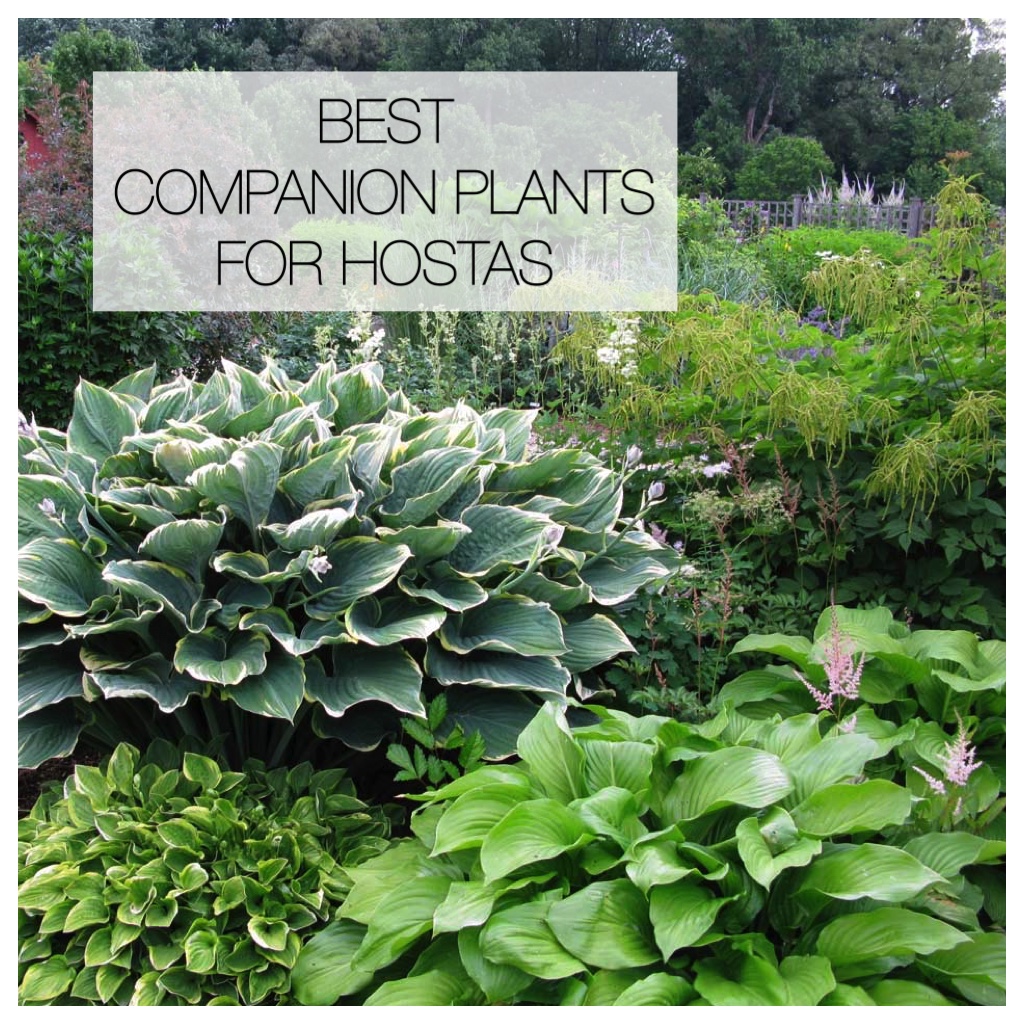
Hostas have no trouble holding their own in a shady garden. Yet there are many other shade loving perennials that make excellent companions. By adding their own contrasting colors, shapes, heights and textures, these plants accentuate the simple elegance of the hosta’s foliage. Plus, they add months of early season interest.
Hosta Companions — Get Two Gardens in One
In the spring, hostas are slow getting started. This opens up many opportunities for spring bulbs and early summer perennials. In the spring garden shown above, hostas are nowhere to be seen. Yet from July through September, they occupy about 75% of the space.
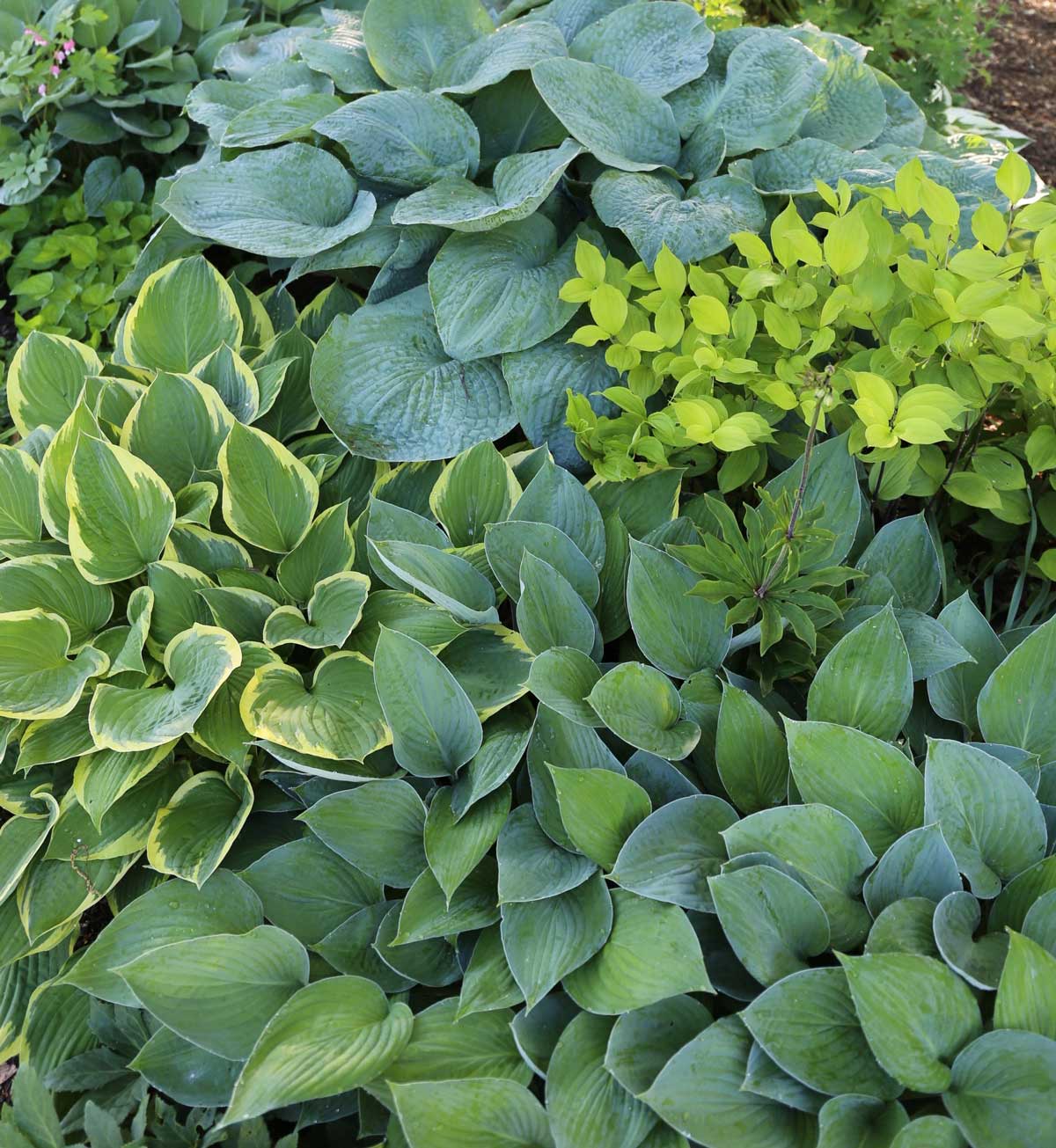
Hosta Companions — More Diversity Without More Work
Pairing hostas with other low-maintenance perennials is an easy way to add variety and sophistication. So, if you are thinking about creating a new shade garden from scratch, or have an existing shade garden that could use a little spicing up, consider pairing hostas with some of these easy, shade-tolerant companion plants.
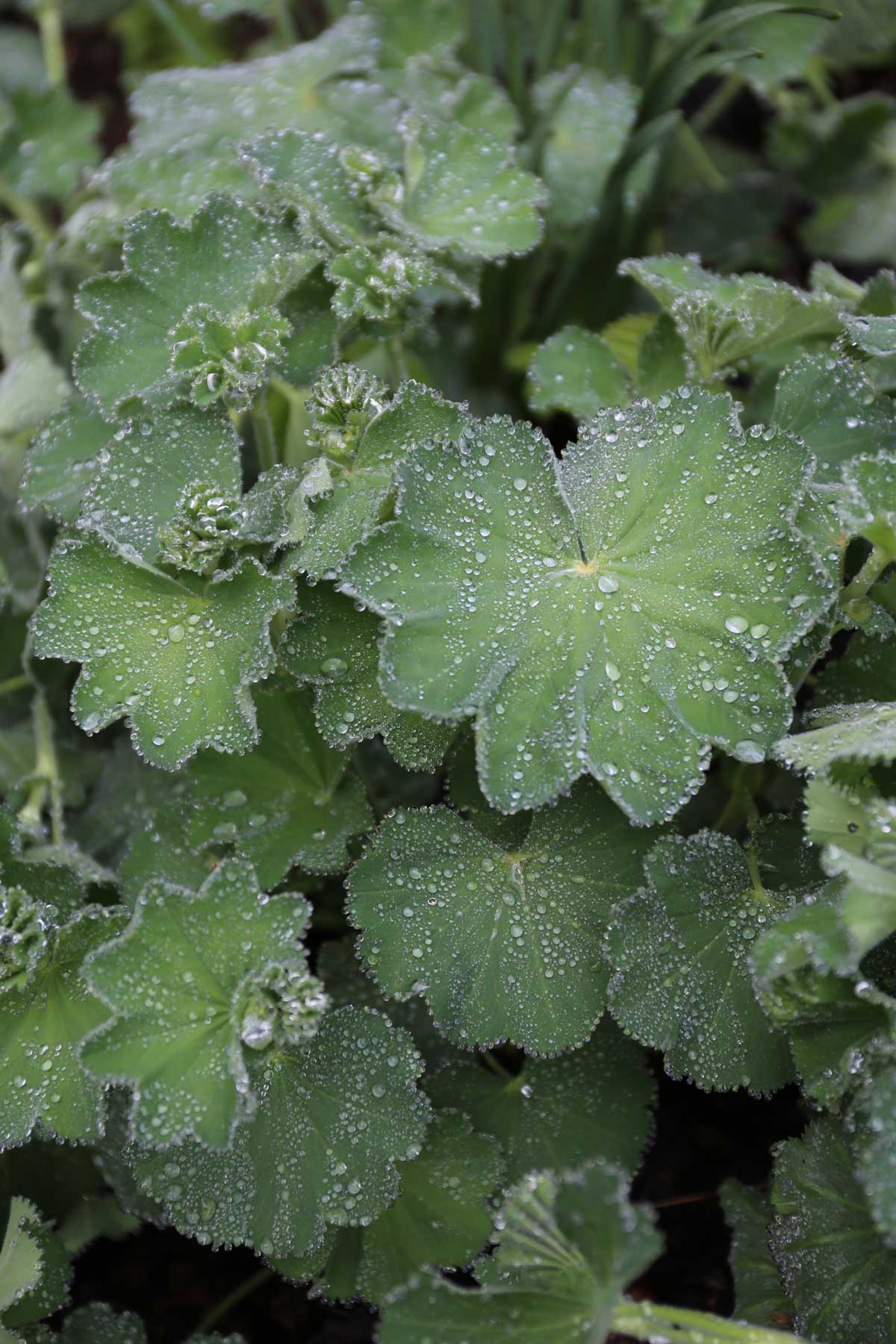
ALCHEMILLA (LADY’S MANTLE)
Velvety, spring-green leaves with zig-zag edges. Silvery hairs on the leaf surfaces turn water droplets into jewels. In early summer, lady’s mantle produces large clusters of tiny chartreuse flowers that are excellent for cutting.
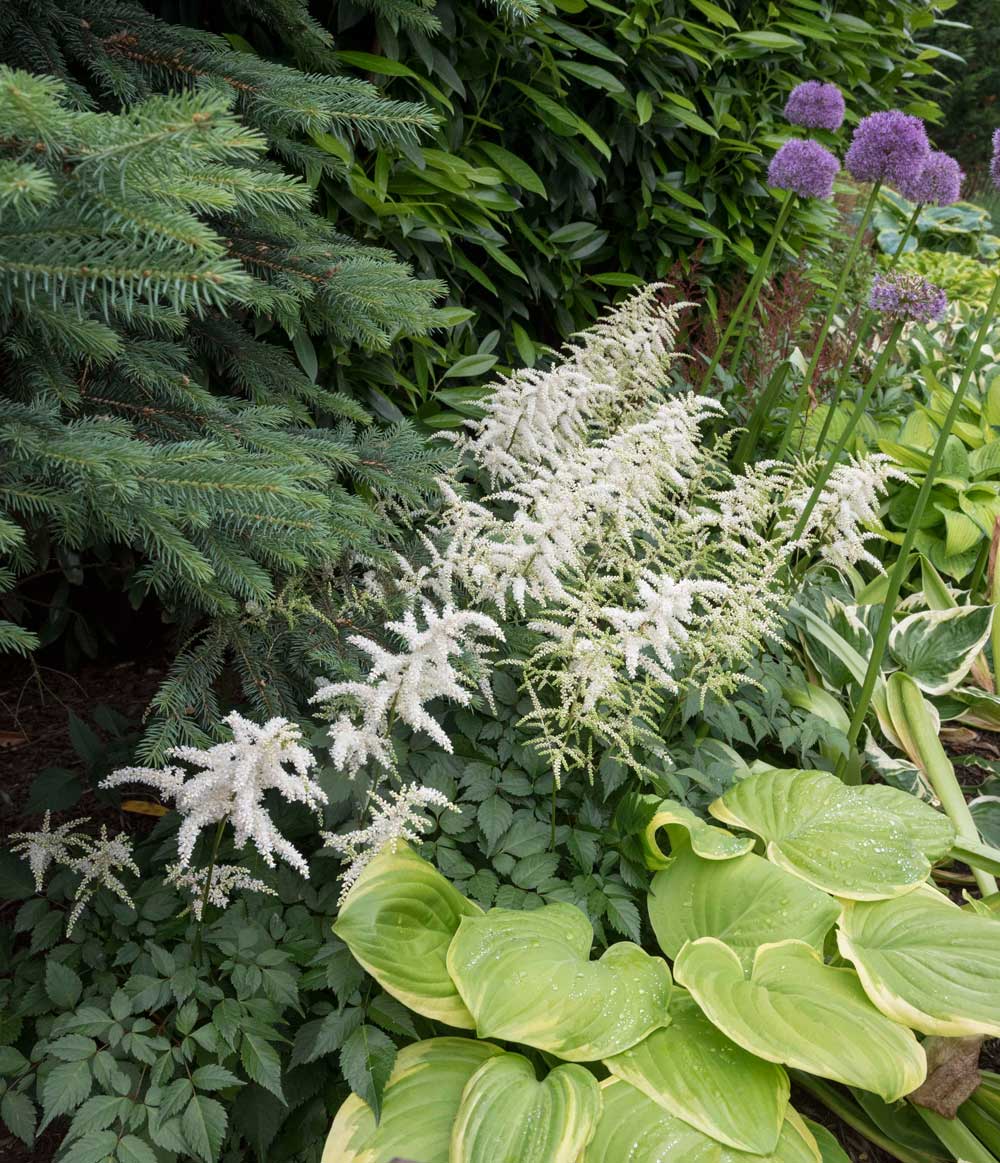
ASTILBE
Tidy, trouble-free plants with attractive, dark green foliage. Astilbe’s showy, midsummer flowers have a fuzzy texture and colors range from white through pink, red and violet.
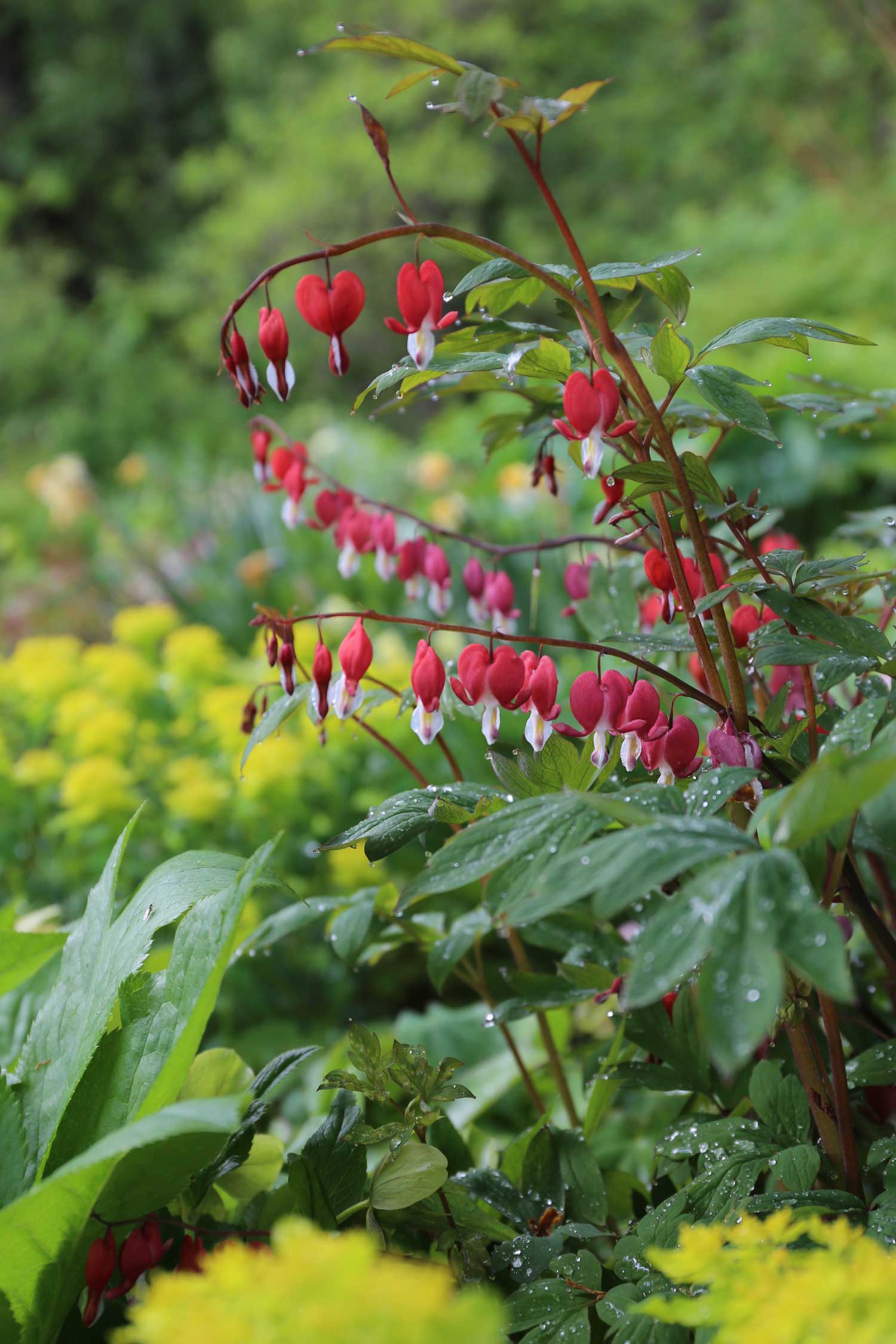
DICENTRA (BLEEDING HEART)
Dicentra spectablis emerges in early spring, and quickly grows into an impressive 3 to 4 foot plant. Shortly after the blossoms fade, the leaves die back to the ground and the plant disappears until the following spring. This gives neighboring hostas plenty of room to spread out.
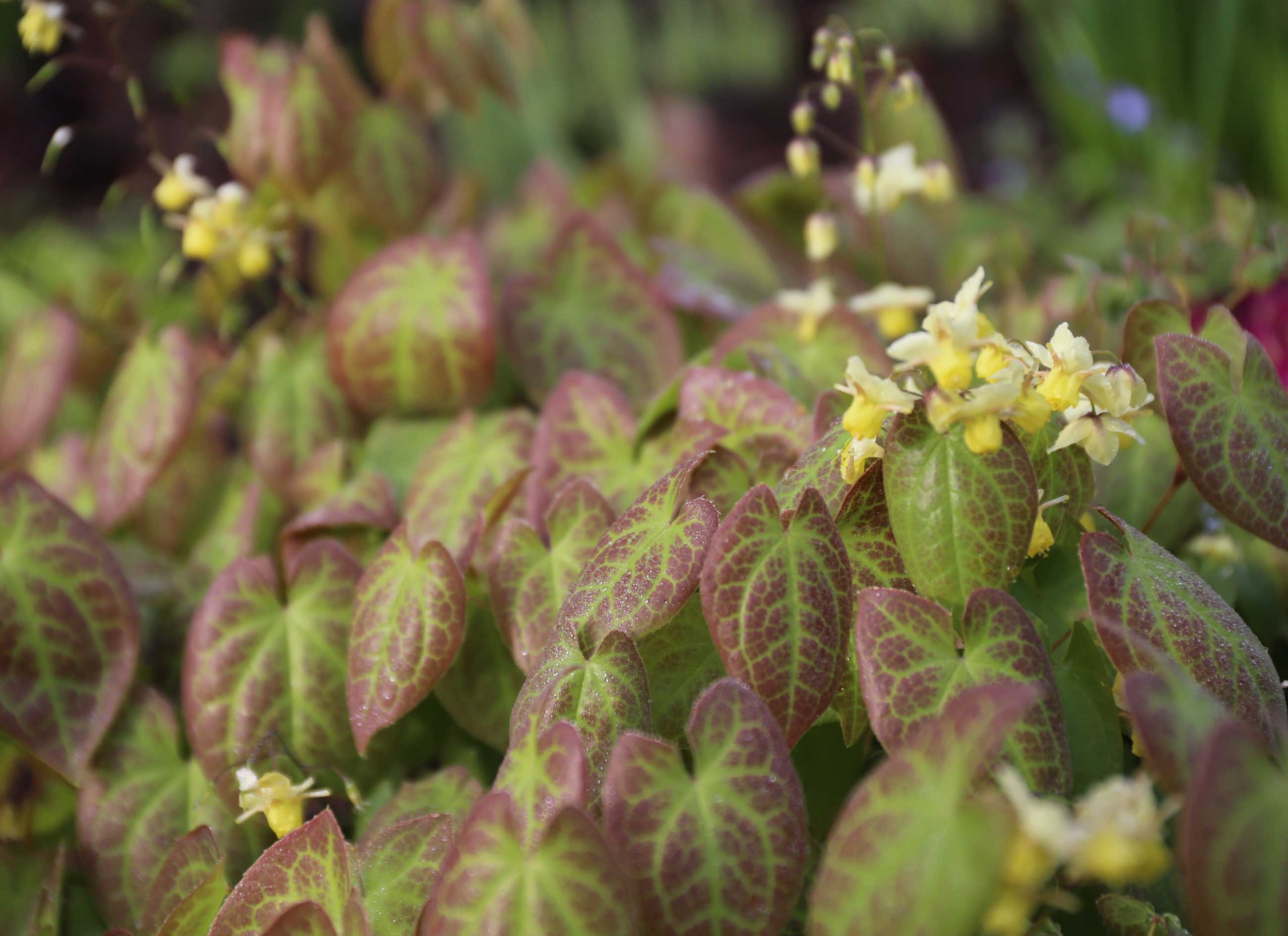
EPIMEDIUM (BARRENWORT)
Another spring-blooming perennial that is happy to take center stage while hostas are still waking up. Decorative heart-shaped foliage and delicate flower clusters in white, yellow, violet or pink.
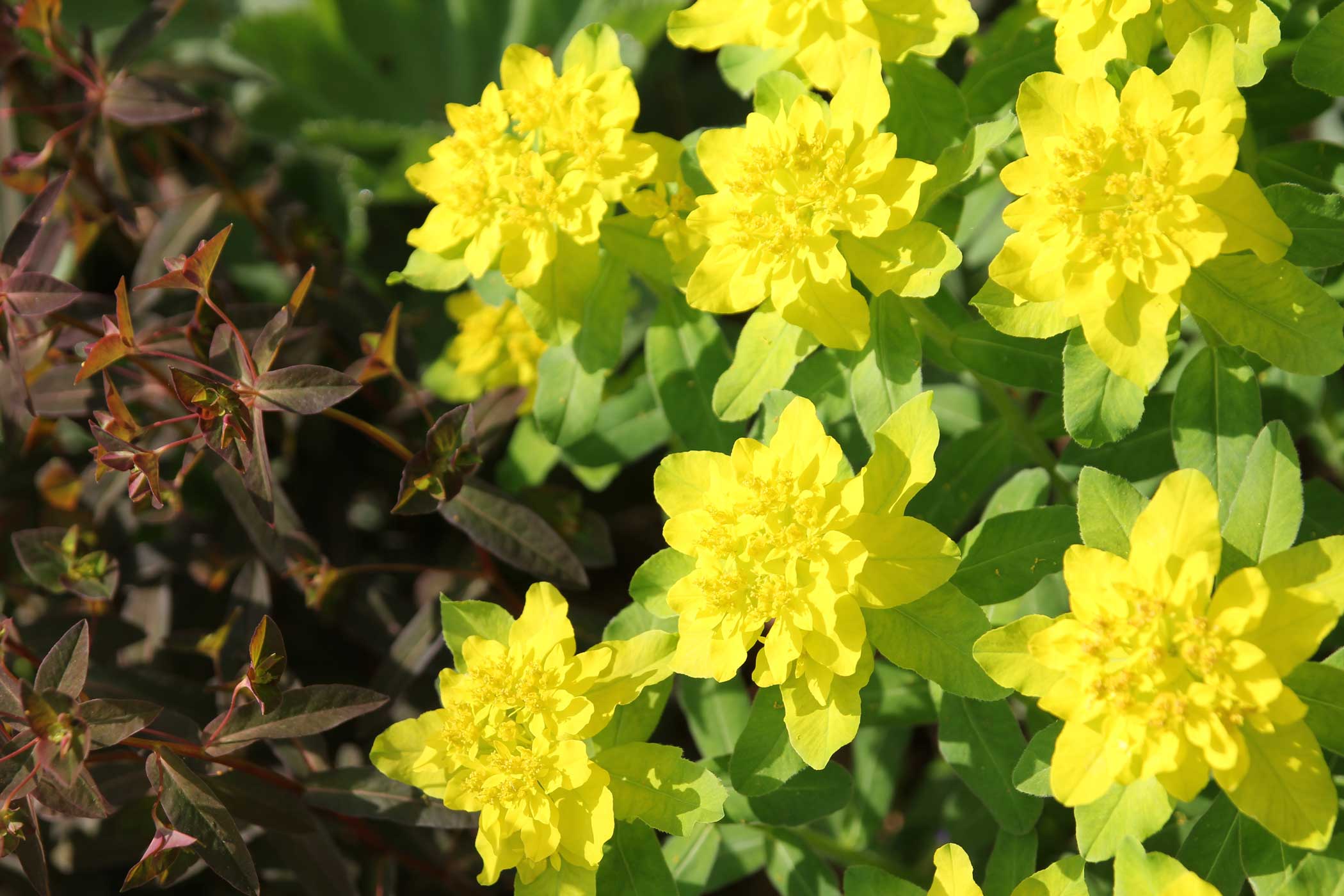
EUPHORBIA (SPURGE)
The garden-worthy varieties of this plant have a neat, mounding habit. Their colorful foliage is usually far showier than their flowers. Foliage colors range from chocolate brown to burgundy, orange, blue-green and chartreuse. (Two varieties are shown above.)
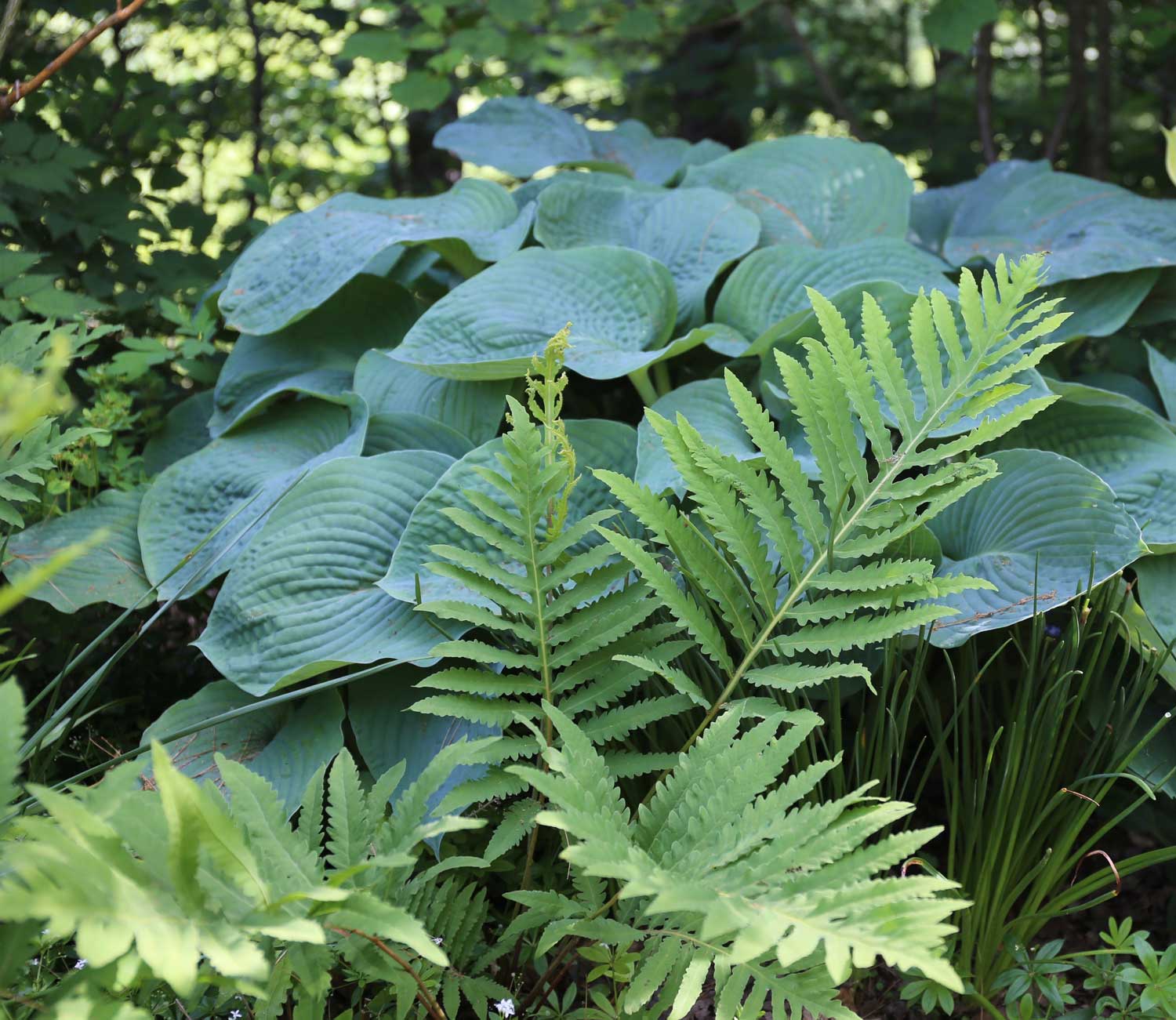
FERNS
Ferns are as easy to grow and as long-lived as hostas. Their graceful form and finely-textured foliage is the perfect counterpoint to the hosta’s broad leaves and bulkier stature.
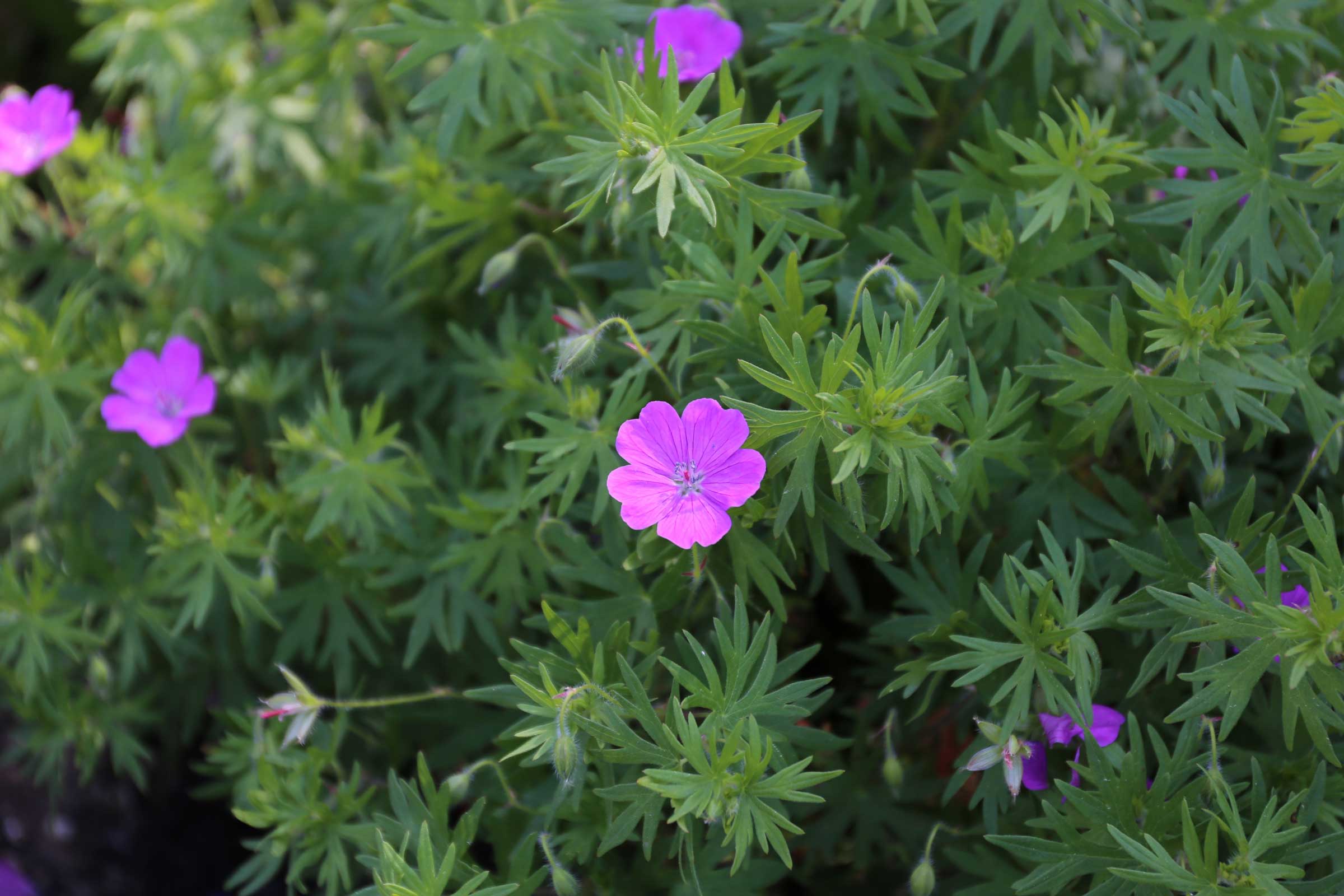
GERANIUM
Perennial geraniums come in all sizes, just like hostas. The texture of their foliage is finer and their growth habit is loose and mounding. Most varieties will flower on and off from early summer through fall.
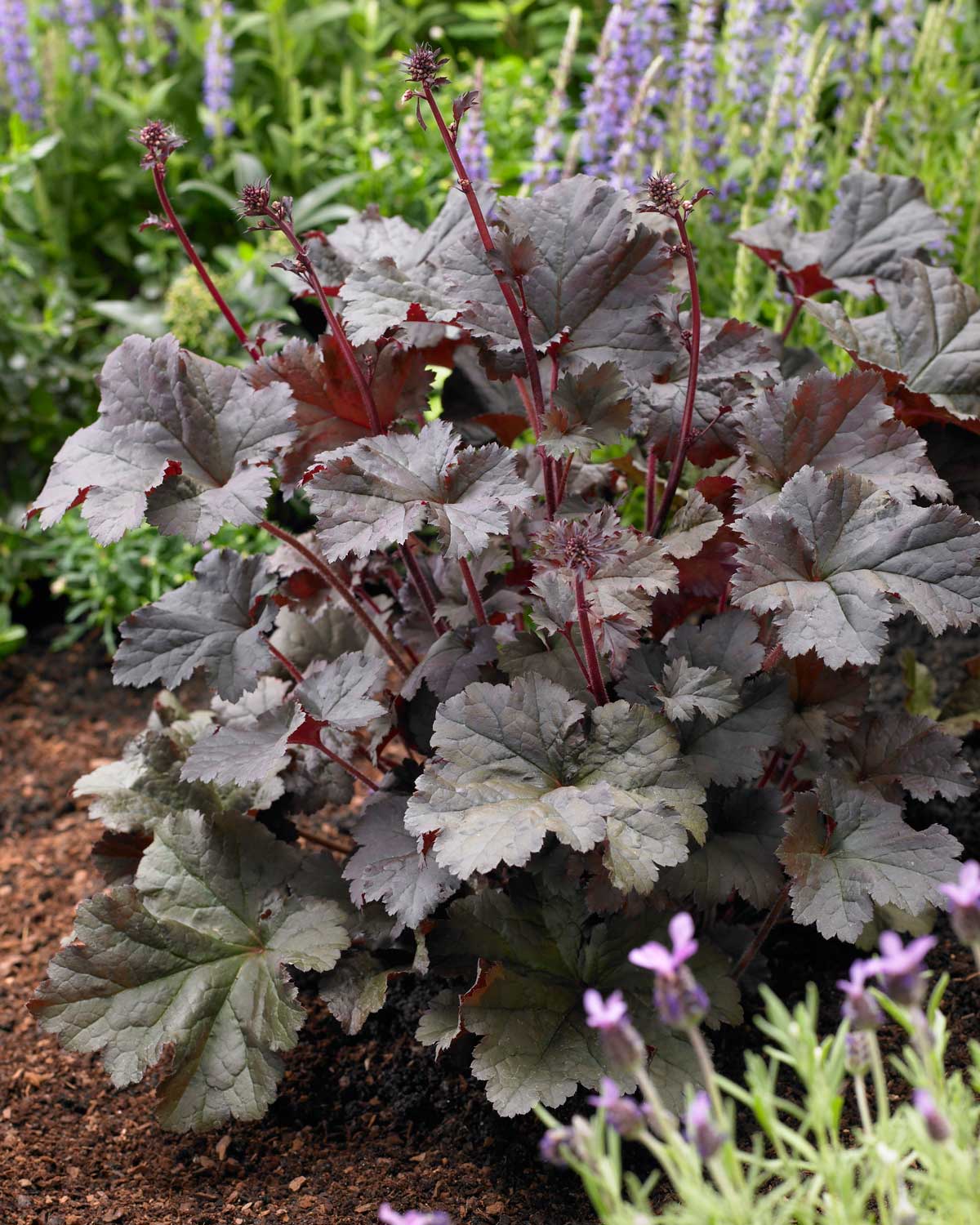
HEUCHERA (CORAL BELLS)
Heuchera are grown for their decorative foliage. Leaf colors range from shiny burgundy to felted orange, glossy lime and silvery green. Midsummer flowers rise about a foot above the leaves and attract hummingbirds.
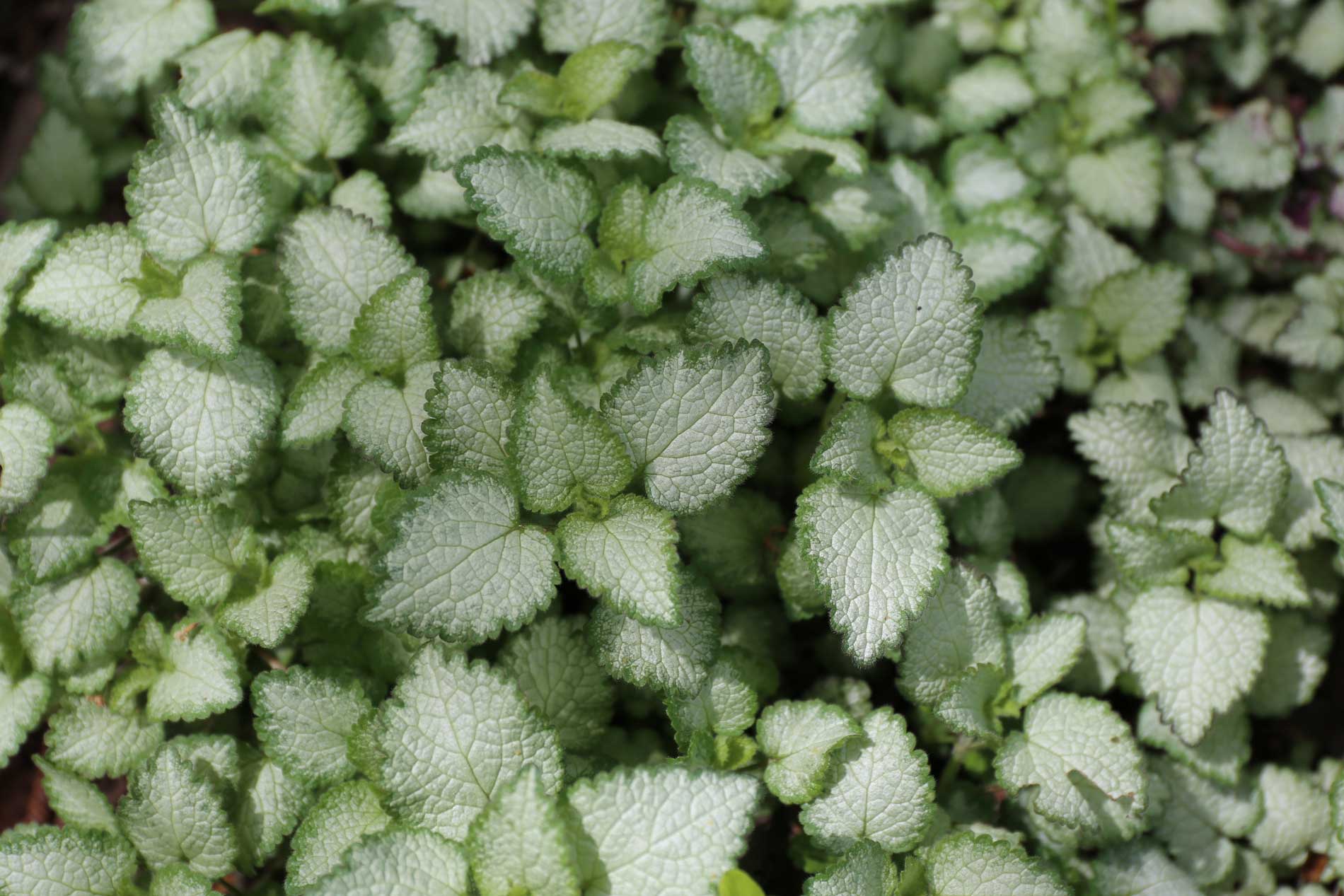
LAMIUM (DEAD NETTLE)
This is a lovely ground cover for decorating the edge of your hosta garden. Look for low-growing varieties of Lamium maculatum that have silvery foliage and pink, purple or white flowers. In some parts of the country, lamium has escaped cultivation and is considered an invasive. Learn more here.
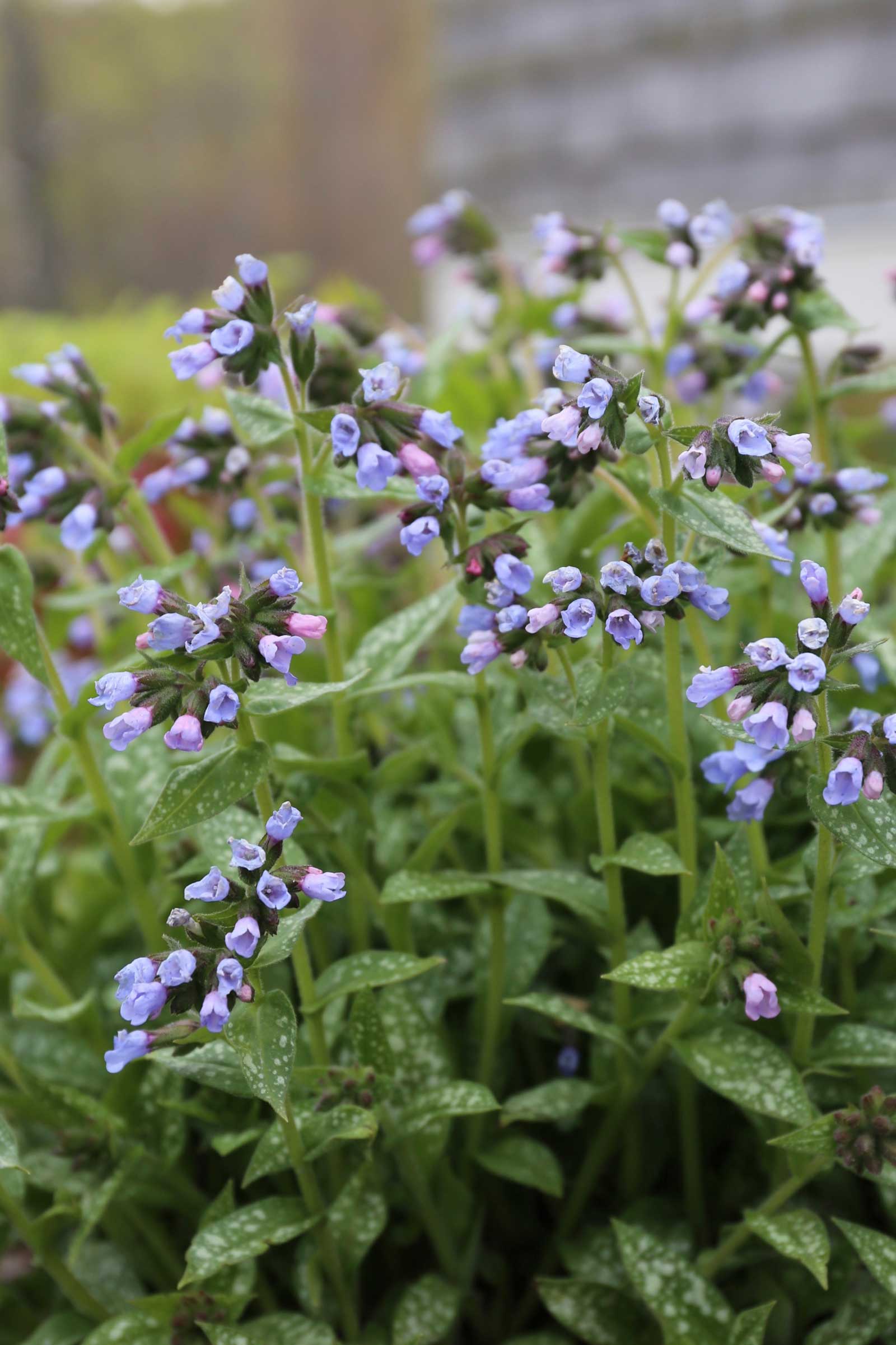
PULMONARIA (LUNGWORT)
Here is another shade plant with lovely foliage. Lungwort’s soft, lance-shaped leaves are speckled with silvery-white spots. In late spring, the plants are covered with clusters of pink, blue or purple flowers, sometimes all on the same plant.
TIARELLA (FOAM FLOWER)
Tiarella is an endearing little plant. Its foliage is similar to a heuchera, but not as flashy. The pale pink, bottle-brush flowers appear in late spring.

SPRING-FLOWERING BULBS
Spring bulbs are ideal companions for hostas. Eligible candidates include early-bloomers such as miniature daffodils, scilla, muscari and fritillaria. To stretch the season into late spring, consider adding alliums. After these bulbs have finished blooming, the hostas will quickly cover up their fading foliage.
We offer hosta plants and many of the other perennials mentioned in this article from March-May. Shop HERE for all of our shade-loving perennials.

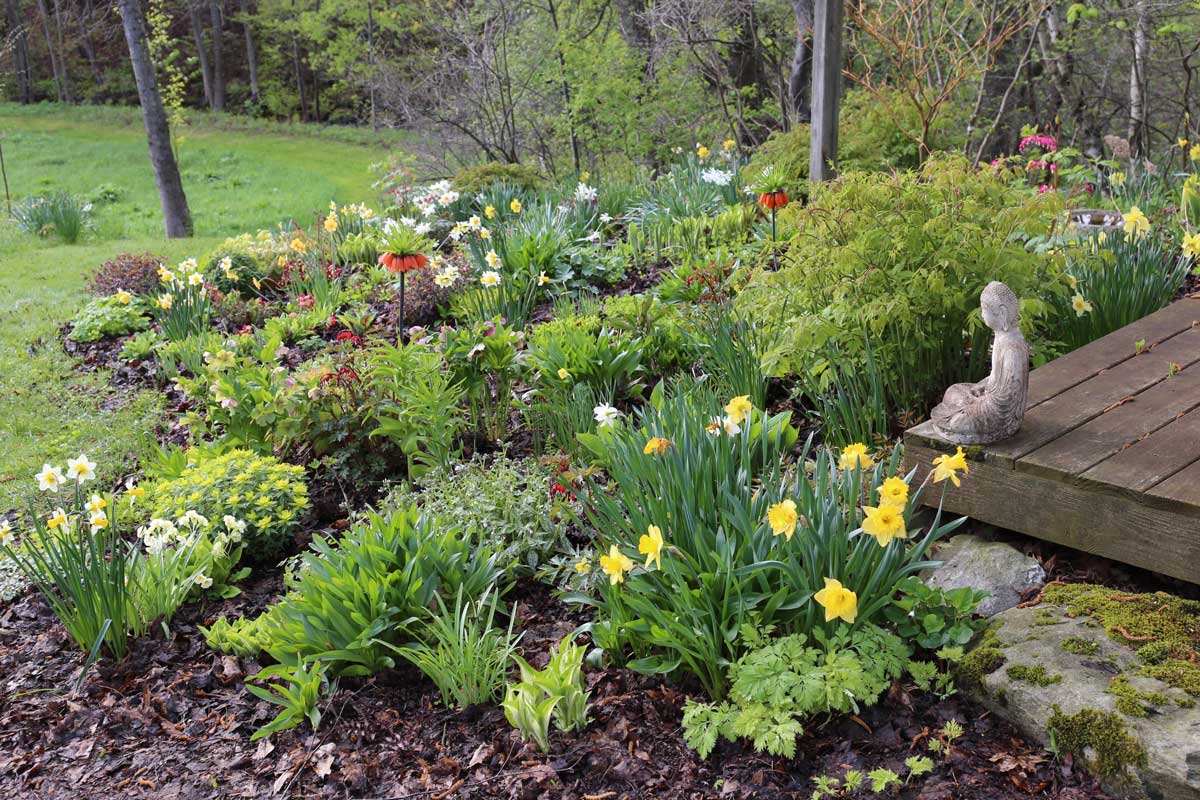
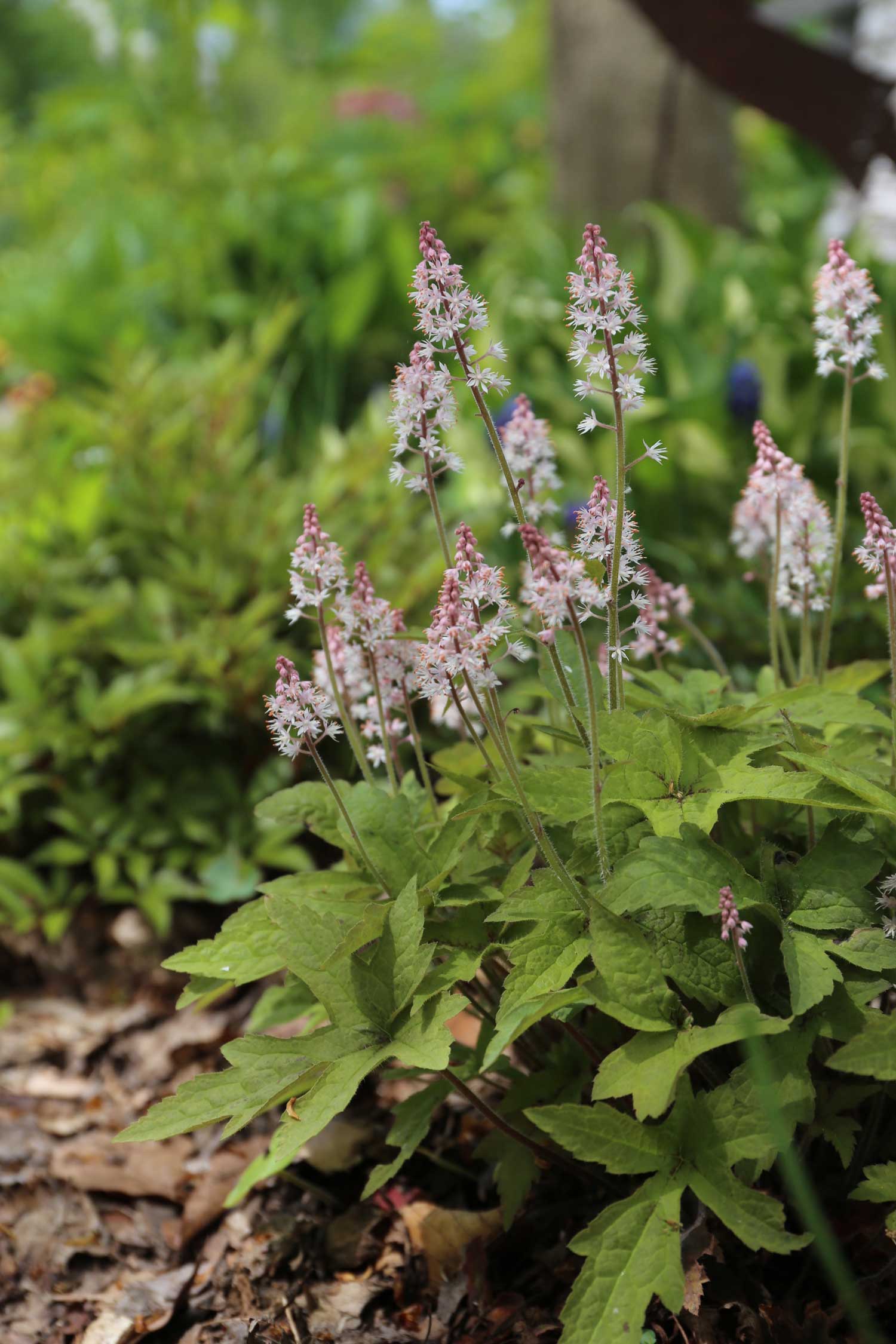
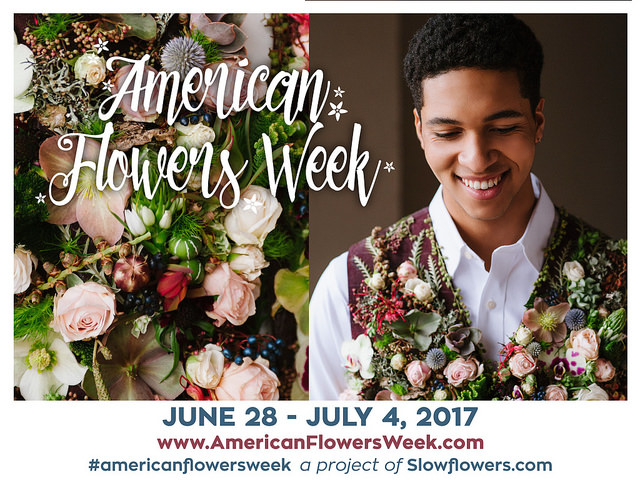
Great ideas.
Thanks, Mary Kaye!
You made my day. I have a base of hosta started on my notorious Pennsylvania hillside garden that is viewed directly from my living room through floor to cieling windows. It has been a 17 year, landscape architect designed annual failure that I believe you may have given me a solution to!
Hi James — So glad you are inspired to tackle that hillside. Hope some of these work for you. There are lots of beautiful ferns to consider — just pay attention to which ones tend to be clump forming and which ones spread.
Silver Latium is on the Invasive Plant list in Canada and a lot of US States. Do not plant this at all…or you will be purging for years to come,
Hi Judy – thanks for the heads up. I have had Lamium maculatum growing in my garden for many years and it is very well mannered. I added a cautionary note to the plant description and a link to a map where it is considered invasive.
One plant is left off this list! Lenten roses! There are many varieties and they are the first to bloom and naturalize well in shade or partial shade. Look for doubles in Rose, Pink, and White.
Hi Cynde, This is a great addition, thanks! All hellebores, also known as lenten roses, are deer resistant. They are beautiful, long-lived, low maintenance plants.
Hi ?I like all the tips here, and love Hostas, But they dont love me. I have tried 3 of them now and they all turn yellow and die within the summer. I had them in pots, about 4 hours of sun and the rest shade. Stopped watering after talking with a gardiner who said it might be too much water because it rained alot here. What am I doing wrong? Everyone says they are so easy, But not mine? Please help me before I give them up?
Hi – it sounds like you have only tried growing hostas in pots. Some varieties can be kept happy in containers, but in general, hostas perform much better when they are grown in the ground. If pots are the only option, stick with dwarf or compact varieties. These will have smaller leaves (less water loss) and a smaller root system (less need for water). Other suggestions: try planting in larger containers and make sure to fertilize monthly. Also, you can take the plants out of their pot and examine the root system. This will often help you to diagnose the problem.
Hope!!! My husband and and I are renovating a 109 yr old house with dirt for a back yard. I’m clueless about landscaping and my thumbs are purple. I am exciting about trying hostas, ferns, and especially that invasive Silver Latium. There is hope for our backyard after all.
Hi Abbey — Sounds like a fun project!